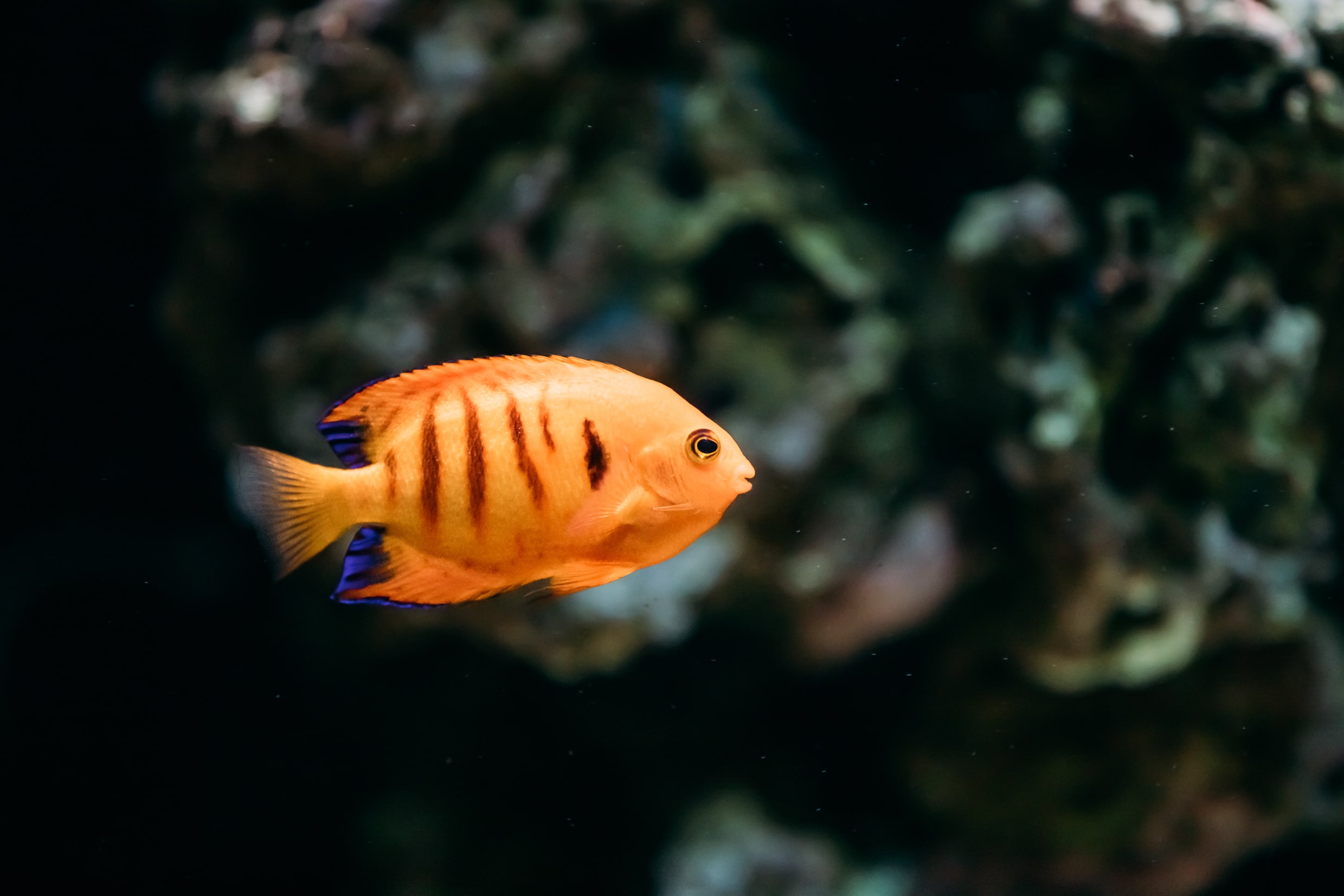
Flame Angelfish Care Guide
Glossary:
- Care Guide & Requirements
- Reef Safe
- Prices
- Food & Diet
- Facts
- FAQs
- Tank Mates & Environment
The Flame Angelfish is a very popular species of angelfish, mainly because of their uniquely beautiful appearance. Angelfish are generally colorful, but the orange-red color makes this species stand out with black vertical stripes, colors that are reminiscent of a tiger. They also feature blue tips at the ends of their fins.
Is the Flame Angelfish reef safe?
The Flame Angelfish can be reef safe, but you must practice caution here. They may begin to nip at coral in the tank, so it may be best to see how they behave around coral when introducing them to a reef tank. If the fish is too aggressive, consider moving the coral to another tank if possible. Some fish may ignore the coral completely, while others enjoy nipping at soft polyps.
Flame Angelfish food and diet
Flame Angelfish eat a variety of plants and animals as omnivores. You can feed them many types of foods to keep them in good health and maintain those vibrant colors. A Flame Angelfish’s diet may include marine algae, Mysis shrimp, brine shrimp, shaved shrimp, spirulina, or commercial angelfish food.
What other fish are the best tank mates for the Flame Angelfish?
You can keep more than one Flame Angelfish in your tank, but they may break out into a fight if there are two or more males. To keep your Flame Angelfish content, consider keeping only one.
In addition to Flame Angelfish, you can keep certain types of fish species in your tank. These fish may include Clownfish, Anthias, Wrasses, and Tangs. In some cases, you can also include other more aggressive fish to the tank, as long as they’re smaller than the Flame Angelfish.
Where to buy Flame Angelfish
You can buy Flame Angelfish from many shops, including the following online stores:
Flame Angelfish are generally easy to care for and they may be reef safe under the right conditions. While they may be more expensive and require ample space to swim, Flame Angelfish can make great pets to keep in your saltwater aquarium.
Flame Angelfish price
Flame Angelfish are less expensive compared to other Angelfish species due to their smaller size and abundance. The average Flame Angelfish price falls somewhere between $75 and $200, depending on the fish size and shop.
Flame Angelfish facts
The following are a few interesting facts about the Flame Angelfish:
- Flame Angelfish colors vary depending on where you find them, with Flames from Tahiti featuring blood-red coloring while those from Cebu have a red-orange color and a shade of yellow between black bars.
- Copper is potentially deadly for this fish, making it important to avoid using copper tubing or tank decorations.
- Flame Angelfish are smaller than other Angelfish, with adults reaching a size of around six inches at a maximum.
Flame Angelfish FAQs
What is the Flame Angelfish lifespan?
While they may live longer in the wild, captive Flame Angelfish in a reef tank don’t tend to live much longer than five to seven years. Often, this shorter lifespan is the result of the stress they experience while shipping them. Considering they’re easy to stress out, they’re more susceptible to illnesses that can significantly reduce their life expectancy.
What are the tank requirements for the Flame Angelfish?
When it comes to the size of the tank for a Flame Angelfish, you don’t need a huge one. Some angelfish do well in a 45-gallon tank, while others may thrive in a 70-gallon tank. However, they do like to have plenty of space to swim, making a larger tank more ideal. Also, keep in mind that the Flame Angelfish is very territorial, which is why you shouldn’t keep more than one or two Flame Angelfish in the same tank.
Regarding water, the ideal conditions for a Flame Angelfish include: 72 to 78 degrees Fahrenheit, a specific gravity between 1.020 and 1.025, and a PH between 8.1 to 8.4.
Are Flame Angelfish rare?
Today, the wild Flame Angelfish population is likely flourishing and nowhere near endangered. However, that could change as coral reefs across the globe continue to suffer. Over time, various human-influenced factors including pollution could cause more reefs to die off, potentially making this species rare in the near future.
